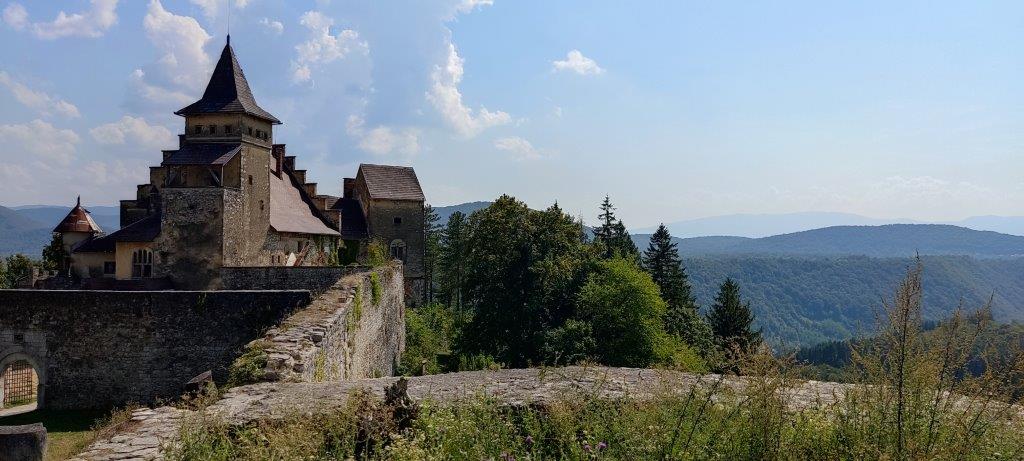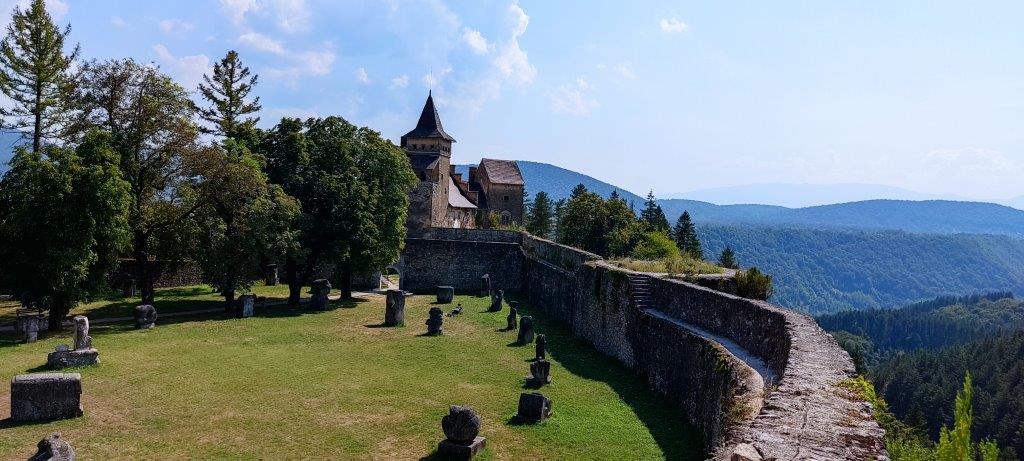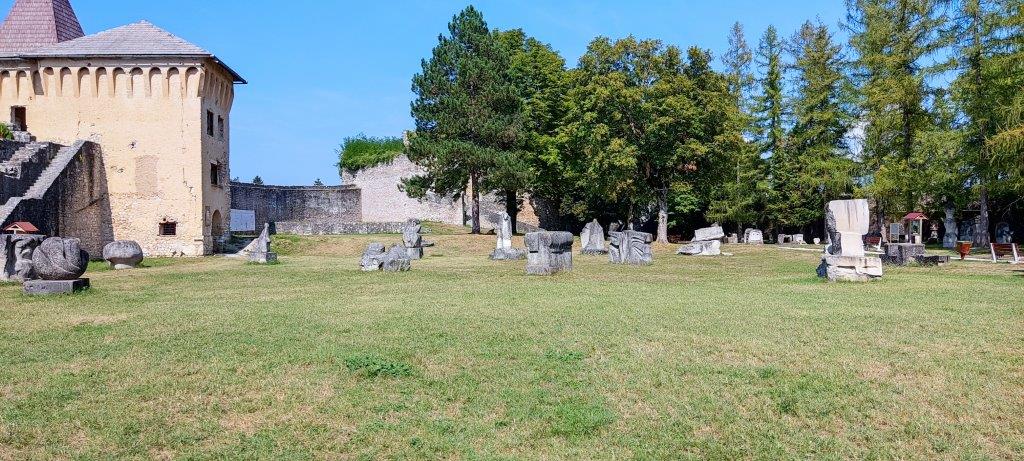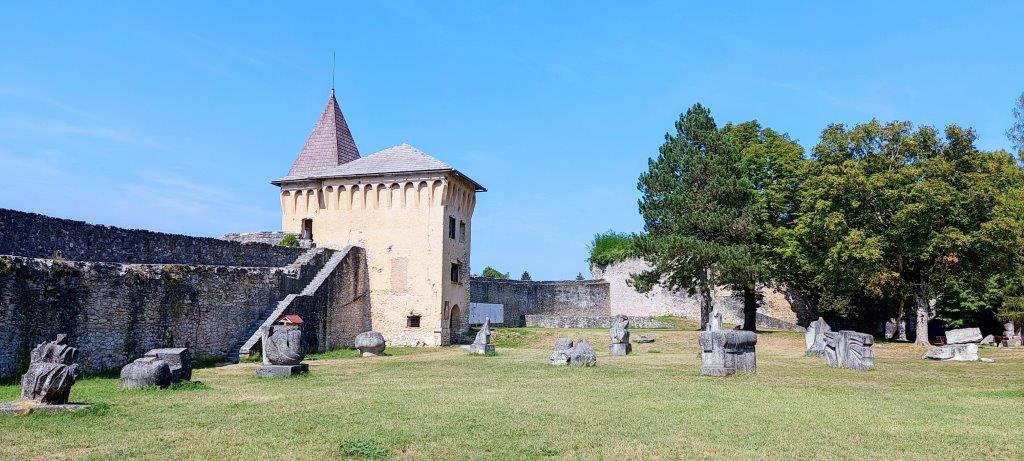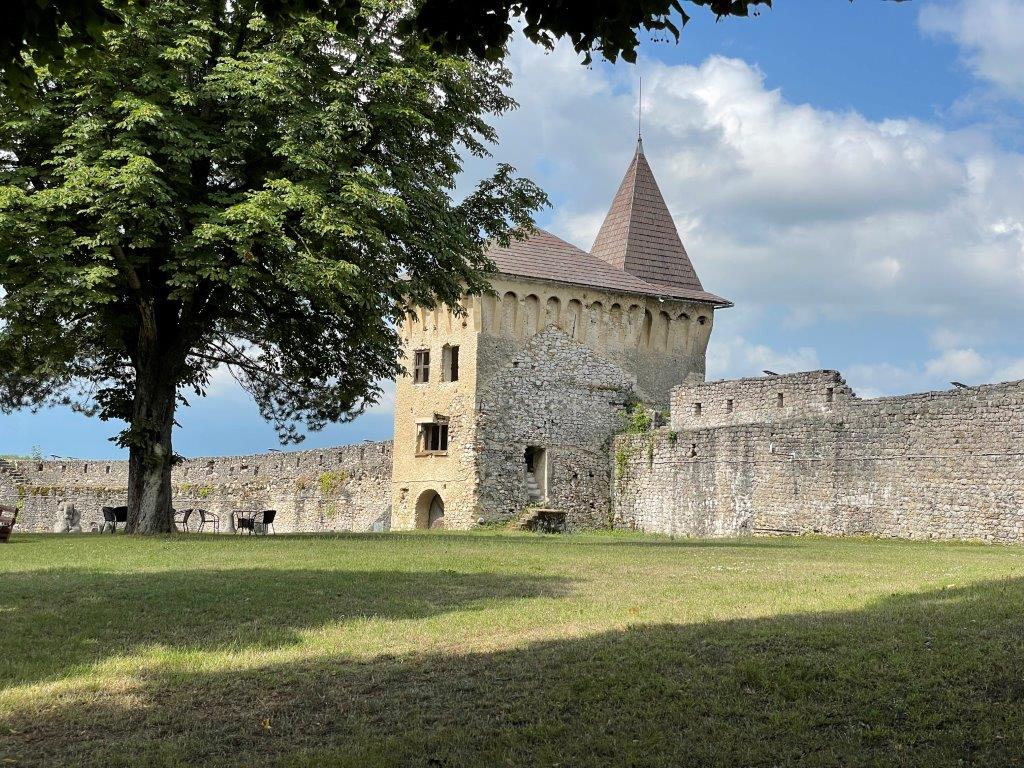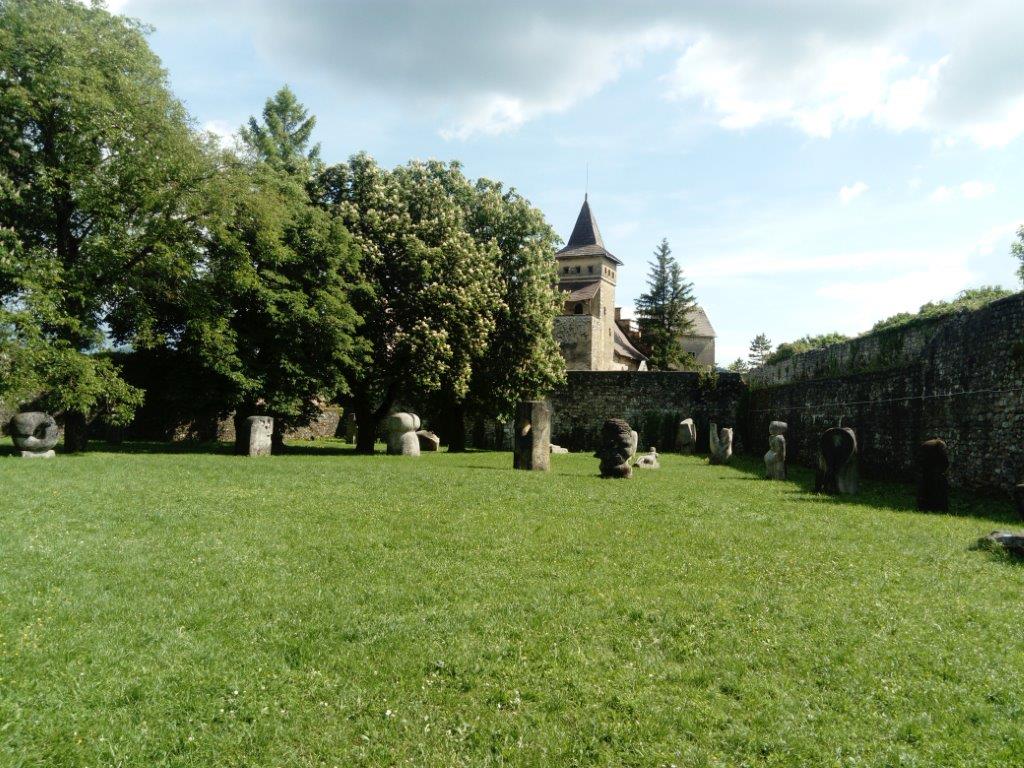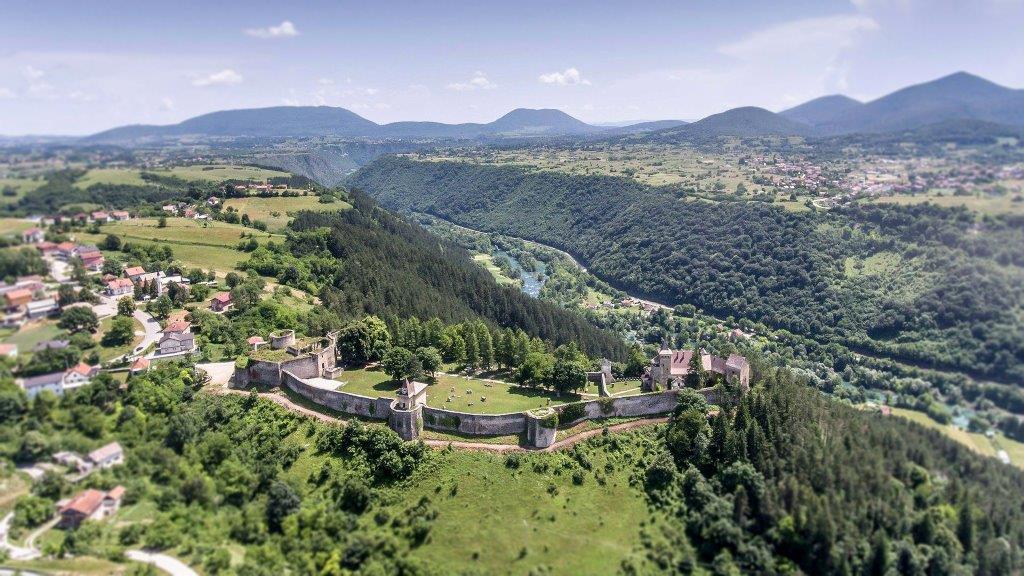Ostrožac represents one of the symbols of the Bosnian border and is certainly one of the most famous old towns in Bosnia and Herzegovina. Although certain assumptions point in the direction that there was an earlier Iron Age hillfort, we can reliably trace the history of Ostrožac only from the Middle Ages. Located on a rock that is an integral part of the Una canyon, at about 379 meters above sea level, the town in the Middle Ages controlled the road that went through the Una valley, but also the wider area in the depth of its hinterland.
The first reliable written evidence of the existence of Ostrožac is a document dated 2 November 1321, where it is stated that Ostrožac, before the Zagreb chapter, was bought by the princes of Blagajski Babonići, Nikola III and Dujam. It is the Babonić family who represent the most famous medieval lords of the town of Ostrožac, so its fate is inextricably linked to the fate of this noble family.
Bey’s residence
Babonić’s rule over Ostrožac lasted until the end of the 14th century, when this town came in contact with the Bosnian noble family Hrvatinić. Namely, in 1395, the Hungarian king Sigismund took Krupa and Ostrožac from the Babonić family and the following year gave the rule to Vuk Vukčić Hrvatinić, the brother of Hrvoje Vukčić Hrvatinić.
Ostrožac remained under the control of Hrvatinić until 1406 at the latest, when it is reliably known that it was in the possession of the Hungarian king. In 1419, with the charter of King Sigismund Babonić, the city of Ostrožac again came under their rule, which lasted until the Ottoman conquests.
Medieval Ostrožac also had its own suburb where artisans and merchants worked. This town had the status of a free municipality with its own seal preserved on a document from 1403. The stamp shows a tower with a crown of closed doors in the middle, and the moon and stars, while the inscription “…COMVNIT (ATIS OSTROCENSIS)…” is written on the edges. The closed door on the tower probably symbolizes the invincibility of Ostrožac, while the moon and star are ancient astral-lunar symbols whose meaning is ambiguous.
During the 16th century, even Ostrožac was not spared from Ottoman incursions, which forced the Austrian authorities to station a Krajian garrison there. Ferhad-bey Sokolović definitely placed Ostrožac under Ottoman rule in 1578, when neighboring Cazin was also conquered. The Ottoman history of Ostrožac is marked by the establishment of the Ostrožac Captaincy and the Beširević family, which, in the capacity of captain, ruled the fortress for more than 200 years.
The first known captain of Ostrožac was Osman-aga Beširević, who lived at the turn of the 17th and 18th centuries in a very turbulent time of constant conflicts with Austria. Osman-aga expanded the Ostrožac fortress by building several places for cannons as well as the captain’s residence – the bey’s quarters, which was located on the site of today’s castle.
Strategically, the Ostroža fortress was one of the most important in the entire Bosnia, so in 1833 there were as many as 28 cannons here. The end of the Beširevic family is very sad. After the sultan abolished captaincy in 1835, with the aim of reforming the state, the last Ostrožac captain, Murat-bey Beširević, rebelled with several other Krajina captains.
The Bosnian governor Veđihi-pasha suppressed this rebellion, looted and burned Ostrožac, and exiled Murat-bey to Asia. Thus, the famous Beširević family was reduced to a beggar’s stick, and the Ostrožac fortress was turned into a ruin. Later, Murat-bey was allowed to return to Bosnia, but he, impoverished and sick, decided to go to his sister Ayša in Livno where she was married. One of the last wishes of this old warrior was for his singer Ćirim Čajić to come from Cazin and sing him his last song.
Art Gallery
At the beginning of the 20th century, during the Austro-Hungarian administration in Bosnia and Herzegovina, Isabella von Berks – born Adamović Čepinska, wife of Lothar von Berks – head of the Bihać District, bought Ostrožac from Mehmed-bey Beširević, a descendant of Ostrožac captains, from her dowry and built a romantic castle there (1900 – 1902). At the same time, the Ostrožac fortress was thoroughly restored. This castle, built in the neo-Gothic style, is the only preserved castle in Bosnia and Herzegovina.
The castle was lavishly furnished with a large number of rooms, including a library as well as a music room. In 1933, the Berks family went to live in Slavonia while using the castle on Ostrošac as a place for rest and leisure.
During the Second World War, during the famous Bihać Republic (1942-1943), Ostrožac was the seat of the Supreme Headquarters of the People’s Liberation Army. After the end of the Second World War, the castle on Ostrožac was turned into a home for orphans, i.e. for children whose parents died during the war. Although the motives of this act were noble, it had disastrous consequences for the castle, because its interior was drastically changed.
The colony of sculptors Ostrožac, which has been operating since 1967, marked a new era in the history of the fortress and gave birth to a kind of “gallery under the open sky”, unique in this region. For almost 60 years, artists and sculptors from all over the world visit Ostrožac and carve their works from the indigenous stone of this region. The result is a collection of over 130 sculptures that are placed in the natural surroundings of the Ostrožac fortress.
The building complex – the Old Town of Ostrožac was declared a national monument of Bosnia and Herzegovina in 2013. The national monument consists of a medieval fort, a fort from the Ottoman period, the castle of Lothar von Berks and a collection of sculptures.


